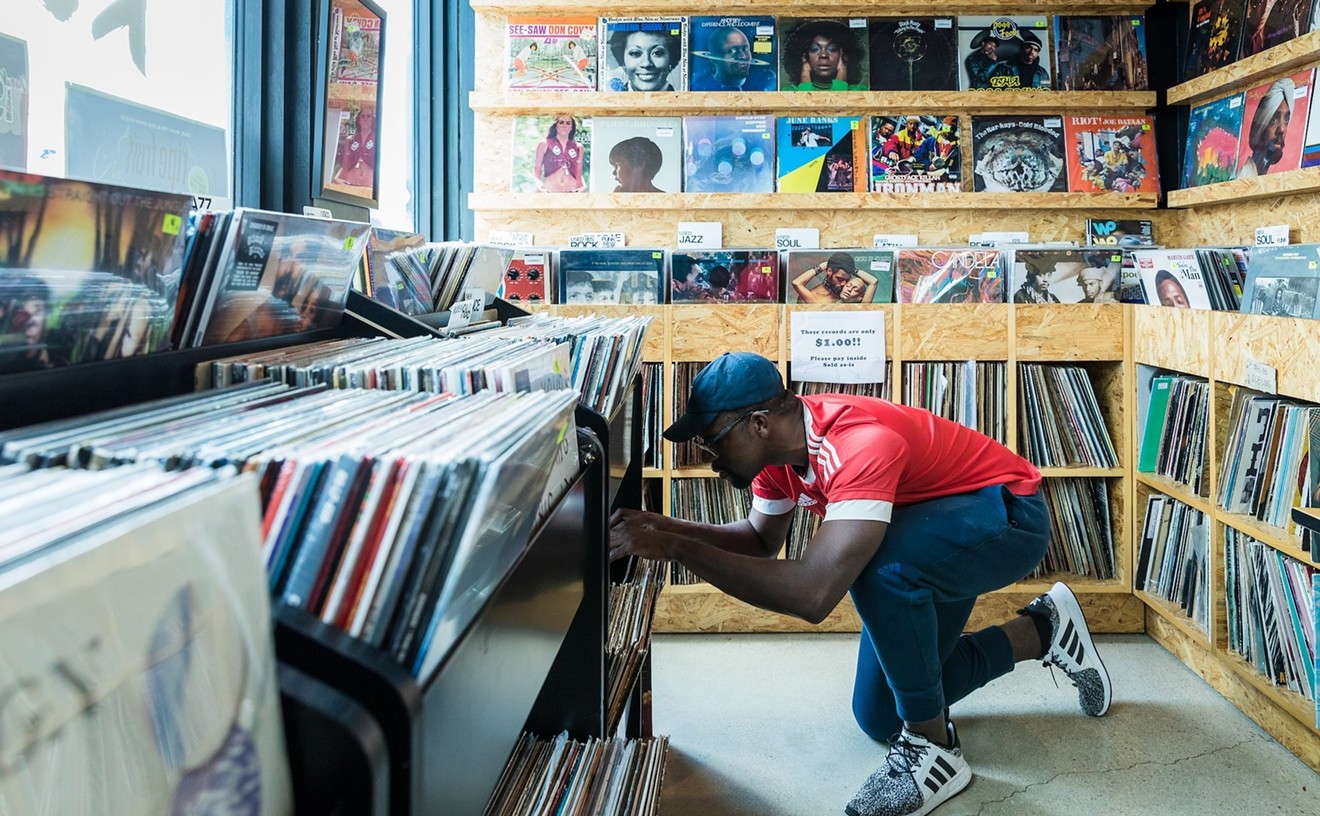Horseshoe crabs shimmy around in the sand on ten legs hidden under a brownish shell, long tails dragging behind them. These creatures, which look headless, have been there for the last 450 million years, doing the hibbety-dibbety on our Atlantic beaches like teenagers. They’ve been spotted on the coast from Nova Scotia southward — even in Broward and Palm Beach counties.
It wasn’t such a big deal hundreds of millions of years ago, when dinosaurs where roaming around. But now that fishermen use these living fossils as bait, the crabs' populations are dwindling and “near threatened,” according to Endangered Species International. Their livelihood is now in jeopardy.
Usually, no one likes PDA on the beach. It’s tacky. And it's even tackier to gawk. But in the case of horseshoe-crab PDA, scientists with the Florida Fish and Wildlife Conservation Commission are urging Florida beachgoers to watch — and take note of date, time, location, habitat type, and the tide when it happens. The FWC says, “If possible, the observer should also count how many horseshoe crabs are mating adults and how many are juveniles (4 inches wide or smaller).”
A female horseshoe crab is much bigger than her male mate. Typically, he will climb on top of her. She carries him to the sand. Then she lays her eggs, and he gladly fertilizes them. Then things take a kinky turn. According to the FWC, it’s not uncommon for other male horseshoe crabs to circle round the couple and watch. A female horseshoe crab can lay 90,000 eggs, but only ten or so will survive and make it back to the ocean.
Another cool thing about these crabs: They aren’t just used for bait. Their blue blood has an important use in medicine. It contains a substance called Limulus Amebocyte Lysat (LAL) that thickens when bacterial toxins are present. Federal law requires any patient having a medical device inserted must be administered an LAL test first. It’s used to sterilize medical equipment and intravenous drugs. In 2012, 611,800 crabs were captured for science. According to one scientist, one quart of their blood is worth $15,000.
The FWC’s horseshoe crab mating survey first began in April 2002. Over the next 13 years, 3,485 sightings have been reported across Florida.
Scientists predict that beachgoers will have the most luck spotting horseshoe crabs doing the old in and out this month during the new moon on March 9 and then again during the full moon on March 23.
The FWC asks the public to report sightings through one of several options. Go to MyFWC.com/Contact and go to “Horseshoe Crab Nesting Activity” for the “Submit a Horseshoe Crab Survey” link, then select “Florida Horseshoe Crab Spawning Beach Survey.” You can also report findings via email at [email protected] or by phone at 866-252-9326.
[
{
"name": "GPT - Billboard - Slot Inline - Content - Labeled - No Desktop",
"component": "16971022",
"insertPoint": "2",
"requiredCountToDisplay": "2"
},{
"name": "Editor Picks",
"component": "15769925",
"insertPoint": "4",
"requiredCountToDisplay": "1"
},{
"name": "Inline Links",
"component": "16575154",
"insertPoint": "8th",
"startingPoint": 8,
"requiredCountToDisplay": "7",
"maxInsertions": 25
},{
"name": "GPT - Rectangle 2x - Slot Auto-select - Labeled",
"component": "15782206",
"insertPoint": "8th",
"startingPoint": 8,
"requiredCountToDisplay": "7",
"maxInsertions": 25
},{
"name": "Inline Links",
"component": "16575154",
"insertPoint": "8th",
"startingPoint": 12,
"requiredCountToDisplay": "11",
"maxInsertions": 25
},{
"name": "GPT - Leaderboard to Tower - Slot Auto-select - Labeled",
"component": "15782207",
"insertPoint": "8th",
"startingPoint": 12,
"requiredCountToDisplay": "11",
"maxInsertions": 25
}
]











